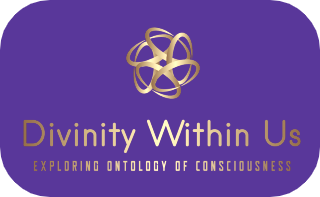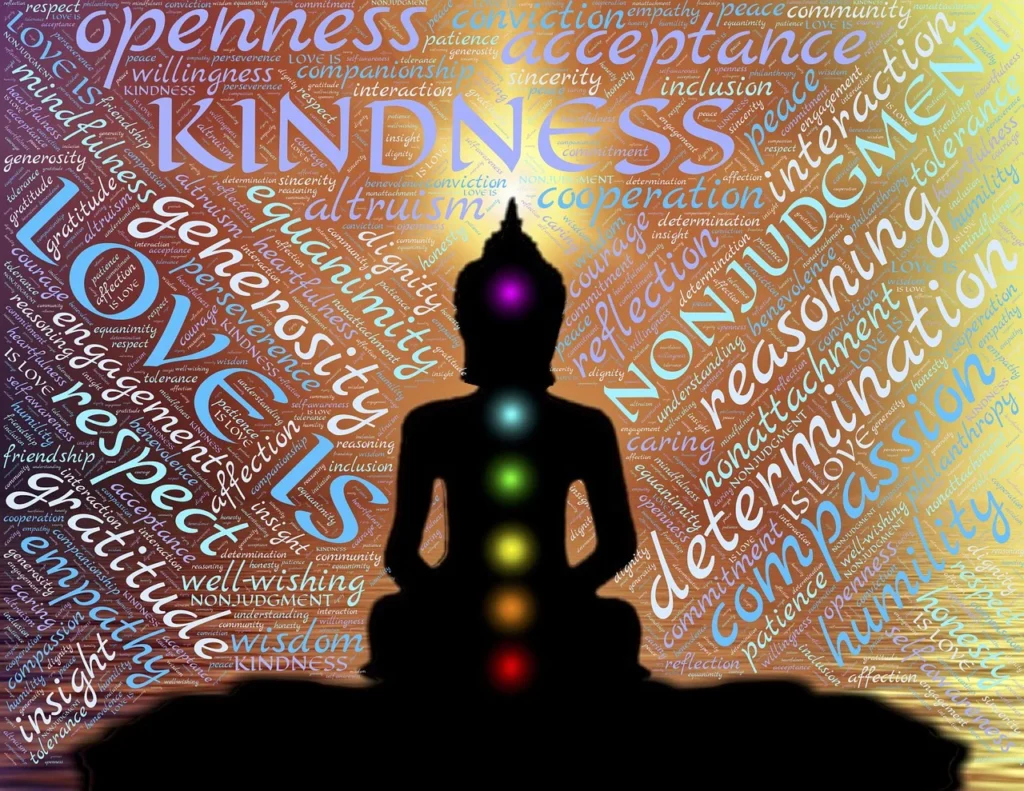Introduction to the Cosmic Perspective
The cosmic perspective represents a profound way of viewing existence, one that emphasizes the interconnectedness of all beings and acknowledges that individual actions are intricately linked to the greater whole. This worldview emerges from various spiritual traditions, including theosophy, hermeticism, and Eastern philosophies, which collectively express a fundamental truth: serving others is tantamount to serving the divine. By adopting this perspective, we as individuals can experience a transformation that elevates our understanding of both self and the universe.
At the heart of the cosmic perspective is the concept of unity. It posits that every entity, whether human, animal, or element of nature, contributes to the intricate web of life. Those of us who attain an awakened state often become embodiments of this unity, recognizing that our purpose transcends personal ambitions and channels into broader acts of selfless service. This realization allows us to stand as conduits for cosmic intelligence, offering insights and healing to all life around us. Our actions reflect a deep understanding that any effort to uplift another simultaneously enriches the ourselves, thereby challenging the boundaries of ego and individuality.
The philosophical foundations of this perspective encourage a mindset of compassion and altruism. When as individuals we view life through a cosmic lens, we naturally gravitate toward actions that resonate with the principles of service and interconnectedness. This attitude not only leads to personal fulfillment but also fosters harmony within communities, as people come together to support one another and work towards a common good. Ultimately, embracing the cosmic perspective is a call to awaken the innate potential within each of us, urging a transformation that acknowledges the sacredness of all life and promotes the idea that our existence is intricately woven with that of others.
Key Spiritual Teachings Supporting Service
Throughout various spiritual traditions, the principle of service to others is not merely an act of charity but a fundamental aspect of spiritual growth and self-realization. One of the prominent frameworks supporting this concept is theosophy, which emphasizes the importance of universal brotherhood. Theosophical teachings assert that true self-realization can only occur through acts of service, encouraging individuals to transcend the ego and connect with a greater collective consciousness. This perspective highlights that, in serving others, one can unearth their own divine nature, fostering an interconnectedness that is vital for spiritual enlightenment.
Similarly, hermeticism provides significant insight with its foundational principle of “as above, so below.” This maxim suggests a profound relationship between the microcosm of us as individuals and the macrocosm of the universe. According to this teaching, acts of kindness and service not only alter the individual’s spiritual landscape but also resonate throughout the cosmos. By aligning one’s actions with higher spiritual laws, practitioners can help to harmonize both their inner world and the larger reality, reinforcing the interconnected nature of existence.
In Eastern spiritual traditions, concepts like seva, or selfless service, and karma yoga, which advocates for performing one’s duty selflessly, further emphasize the transformative power of service. Seva teaches that by engaging in acts of compassion without expectation of reward, we as individuals cultivate a sense of unity with others and with the divine. Similarly, karma yoga underscores that through selfless action, one can attain spiritual liberation, as it detaches the individual from the fruits of their labor, fostering a more profound sense of purpose.
Through these teachings, it becomes evident that the act of serving others is integral to personal and collective spiritual evolution, illustrating a pathway toward unity and understanding in the broader cosmos.
Cultivating Gnosis and Claircognizance
Developing the abilities of gnosis and claircognizance requires dedicated practices that enhance one’s intuitive capacities and inner knowing. These abilities allow individuals to access deeper insights and transform their understanding of themselves and the universe, which is essential for a life of service. One effective method for cultivating these abilities is through meditation. Regular meditation fosters a quiet mind, allowing for clearer reception of intuitive messages and deeper connection with one’s higher self. As active practitioners we develop mindfulness, that may become more attuned to feelings and insights that arise spontaneously, thus enhancing our claircognizance.
Visualization is another powerful technique in this context. By creating mental images that represent specific goals or intentions, we as individuals can harness the power of our mind to manifest clarity and understanding. Visualization practices may involve imagining oneself surrounded by light or envisioning specific scenarios where intuitive knowing is required. This form of mental rehearsal not only strengthens the connection to intuitive abilities but often leads to profound realizations about the nature of one’s purpose.
Journaling also plays a significant role in cultivating gnosis. Writing reflections, insights, and experiences offers a tangible avenue through which individuals can process emotions and thoughts. By keeping a dedicated journal for intuitive insights, one can track their growth and observe patterns or recurring themes. This practice reinforces the validation of intuitive messages and builds trust in one’s capacity to access higher wisdom.
Finally, chakra balancing can significantly enhance both gnosis and claircognizance. By addressing energy imbalances within the chakras, individuals promote a harmonious flow of energy that supports mental clarity and intuitive insight. Techniques such as yoga, sound healing, or guided imagery specific to chakra cleansing can be beneficial. Through these collective practices, individuals can foster a greater connection to their inner knowing, enhancing their ability to serve from a place of wisdom and unity.
Aligning with the Principles of Selfless Service
Selfless service, often emphasized in various spiritual traditions, encompasses the practice of engaging in actions that benefit others without any expectation for personal gain. This principle is deeply rooted in the understanding of interconnectedness and shared existence. By aligning our actions with the ideals of selfless service, we cultivate a deeper empathy and compassion towards those around us, which prompts us to address their unspoken needs and interests.
To effectively practice selfless action, one must first embrace the fundamental tenets of ahimsa, which promotes non-violence and respect towards all forms of life. This principle encourages individuals to approach their service with a heart free from judgment and bias, allowing for a more profound understanding of others’ circumstances and emotions. When we act from a place of sincerity, we decrease the likelihood of inflicting unintended harm while fostering a more nurturing environment for those we seek to support.
Furthermore, it is essential to engage in acts of service without attachment to the outcomes. This approach not only alleviates the pressure often felt when striving to make an impact but also invites a more profound sense of fulfillment. By focusing on the act itself rather than the results, we create space for authentic connection and understanding, which can be transformative for both the giver and the receiver. Practical ways to embody this principle may include volunteering in community initiatives or providing support to friends and family without seeking acknowledgment or reciprocity.
Developing a sensitivity towards the unexpressed needs of others fosters a more impactful approach to service. This can be enhanced through active listening and mindful engagement, inviting people to share their experiences and challenges. By doing so, we not only provide assistance but also validate their feelings, effectively deepening our relationships and enhancing the collective spirit of our efforts in service.
Applying Gnosis and Claircognizance in Healing and Mentorship
Gnosis and claircognizance represent profound spiritual abilities that can significantly enhance methods of healing and mentorship within various communities. By incorporating gnosis—an intuitive understanding of spiritual truths—and claircognizance, which is the clear knowing of information without logical reasoning, mentors and healers can foster deeper connections with individuals and groups. These abilities empower insightful guidance that transcends traditional practices, enabling transformative experiences for recipients.
In healing practices, for instance, incorporating gnosis allows practitioners to tap into a deeper level of awareness and comprehension regarding a person’s condition. This innate understanding can reveal underlying emotional, spiritual, or physical issues that may not be immediately visible through conventional diagnostic methods. Healers who employ claircognizance can access vital information about the energetic blocks affecting a client’s well-being. This unique blend enables them to formulate more comprehensive treatment plans that address not only symptoms but also root causes of distress, promoting holistic healing.
Furthermore, the role of mentors who utilize these abilities is crucial in guiding individuals through personal development and collective empowerment. Mentorship rooted in gnosis and claircognizance enhances the guidance provided to mentees, as it fosters a connection based on deep empathy and spiritual insight. Such mentorship encourages individuals to explore their unique paths and encourages them to channel their own spiritual gifts. In this way, communities benefit through empowered individuals who are equipped with the knowledge and wisdom required for furthering collective goals, which is essential in sacred activism.
Through the application of gnosis and claircognizance, both healers and mentors serve as catalysts for transformation. They facilitate an environment conducive to healing and growth, guiding individuals and communities towards a higher understanding of unity and purpose.
Practices for Embodying Unity in Service
Embodying unity in service involves a conscious commitment to practices that reinforce our connection to others and to the world around us. These daily actions contribute to cultivating a mindset grounded in love, wisdom, and harmony with all living beings. One foundational practice is the use of affirmations. By articulating positive statements about our intentions for service, we can reshape our thoughts and cultivate a deeper understanding of our shared humanity. For instance, affirmations such as “I am a vessel of love and compassion” remind us of our purpose and help align our daily actions with our spiritual values.
Rituals of gratitude serve as another powerful practice. Taking time each day to reflect on the things for which we are thankful fosters an appreciation for the interconnectedness of life. This gratitude can be expressed in various forms, such as keeping a gratitude journal or participating in community service activities. By recognizing and celebrating our interdependence, we reinforce our commitment to unity and service, allowing these sentiments to permeate our interactions with others.
Living mindfully through the lens of sacred ecology encourages us to engage with the environment and recognize our responsibility toward all living beings. Mindful practices may include spending time in nature, practicing sustainable living, and fostering an awareness of the impact of our choices on the planet. By embracing a lifestyle that respects ecological balance, we further embody the unity principle and demonstrate service toward the Earth and its inhabitants.
Incorporating these practices into daily life invites a deeper connection with human experiences and the world around us. As we affirm our intentions, express gratitude, and engage mindfully with nature, we cultivate a transformative mindset that recognizes the inherent unity in service.
Deepening Connection to Higher Planes
In the quest for a deeper connection to higher spiritual realms, individuals often turn to a variety of practices such as prayer, sacred study, and collective efforts. These methods serve not merely as routines but as sacred pathways that facilitate communion with the divine. By engaging in regular prayer, practitioners open themselves to the flow of higher consciousness, allowing insights and guidance to permeate their daily lives. Prayer acts as an invitation for dialogue with higher powers, fostering a sense of unity and purpose.
Sacred study complements this endeavor by providing individuals with the tools to explore spiritual literature and philosophy. Through the study of sacred texts, one can uncover timeless wisdom that offers clarity on life’s uncertainties and challenges. This pursuit of knowledge invites an expansion of understanding, thereby enriching the spiritual journey. It equips individuals with the theoretical framework needed to comprehend their experiences on a broader scale, leading to a more profound connection with higher planes.
Moreover, collective efforts embody the essence of community and shared purpose in enhancing spiritual growth. When individuals gather for group meditation, prayer, or spiritual discussions, the collective energy amplifies their intentions and aspirations. These interactions create a supportive atmosphere that nurtures each participant’s journey towards higher awareness. It is in this collective environment that one can truly feel the unity in service, where the act of helping others becomes intertwined with personal spiritual elevation.
Engaging in these practices sustains and amplifies an individual’s ability to serve others. As connections to higher spiritual realms deepen, so does the capacity to understand and alleviate the suffering of others, reinforcing the interconnectedness of all beings. Thus, the journey toward higher consciousness is not an isolated endeavor but a shared commitment to fostering love and compassion in the world.
Overcoming Challenges on the Path of Service
Embarking on a journey of service can be both fulfilling and daunting. As individuals commit to selfless acts aimed at bettering the lives of others, they often encounter various challenges that can hinder their effectiveness. One of the most significant obstacles is ego dissolution. The desire to serve can sometimes lead to a sense of self-importance, which can distort intentions. Therefore, it is crucial to understand the nature of ego and its role in service. Practicing self-reflection and mindfulness can help individuals remain grounded, allowing them to approach service from a place of humility and authenticity.
Grounding practices are essential to maintain focus and clarity while navigating the complexities of service. Techniques such as meditation, yoga, or simply spending time in nature can reestablish a connection with the self and the universe. Such practices can facilitate emotional regulation, helping individuals to remain centered when faced with challenges or frustrations. This grounding is not merely a personal benefit; it enhances the ability to serve, as individuals remain present and engaged in their tasks. Additionally, grounding techniques can help cultivate a sense of unity with others, reinforcing the interconnectedness that lies at the heart of the service journey.
Navigating self-doubt is another prevalent challenge on the path of service. Individuals often question their capabilities and the impact of their efforts, leading to feelings of inadequacy. To combat this, it is vital to embrace a growth mindset. This involves recognizing that challenges are opportunities for learning and transformation. Seeking feedback, reflecting on past successes, and celebrating small victories can foster resilience and confidence, reminding individuals of the purpose that drives their service. Assuring oneself that every act of kindness contributes to collective healing is paramount, creating a sense of meaning and connection throughout the service process.
The Vision of Service to All Life
In exploring the vision of service to all life, we find that the integration of gnosis and claircognizance evokes a profound understanding of our interconnectedness. Gnosis, representing deep spiritual knowledge, allows individuals to perceive the underlying unity of existence. Claircognizance, on the other hand, offers clear knowing that transcends mental constructs and societal limitations. Together, they form a cohesive framework that encourages compassionate action towards all living beings.
This vision calls for an awakening that transcends the individualistic perspective, prompting a shift towards collective consciousness. As we cultivate gnosis, we are invited to recognize that our actions resonate far beyond our immediate surroundings, creating ripples throughout the cosmos. This awareness of connectedness fosters a spirit of empathy and kindness, driving us to serve rather than to dominate or neglect. Such service emerges not out of obligation, but as a natural extension of understanding our shared existence.
Moreover, integrating these spiritual insights into our daily lives creates pathways for wisdom to flourish. It inspires individuals to unleash their potential and act consciously in the world. Instead of viewing service as a chore, it evolves into a sacred commitment—one that embodies the principles of love, respect, and responsibility towards all forms of life. This elevated approach to service strengthens the bonds that unite us, propelling communities toward harmony and mutual support.
By inspiring others to awaken to their own spiritual potential, we contribute to a cycle of growth and empowerment that benefits everyone. A collective recognition of our shared journey becomes the driving force of positive change, nurturing a more empathetic and unified existence. Through this vision of service, we actively participate in the abundant tapestry of life, creating a legacy that honors both the individual and the collective.






